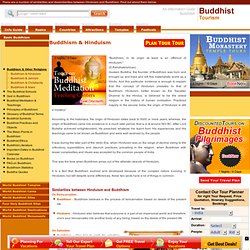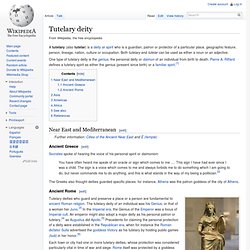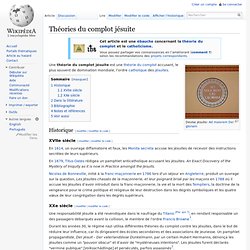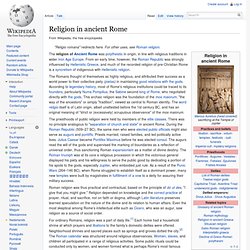

d8ecc07e906127bf0fd4623504b7eca8.jpg (1312×863) Alignments of Sacred Sites. World religions. Menu Sponsored link.

AGNOSTICISME. Un article de Wikipédia, l'encyclopédie libre.

Religion of Great Philosophers. Comparison of Genesis with Creation Stories of the Ancient Near East. One Viewpoint Many professors in colleges, universities and seminaries today agree with the following ideas and teach them to their students.

This is one reason young people who have had a strong religious faith lose it when they go to college. For many centuries, Jewish and Christian theologians agreed that the accounts of the world's origin given in Genesis were not only inspired by God, but owed nothing to any other scriptures. This extreme view has now been abandoned by all but fundamentalists.1 These authors are probably correct that all but Bible believers (fundamentalists) have abandoned this view. The Genesis Creation Story does not owe anything to the creation myths of Egypt and Mesopotamia. The first account of Creation (Genesis 1:1-2:31) was composed at Jerusalem soon after the return from the Babylonian Exile (500 BC).
This interpretation of Genesis 1 and 2 agrees with many scholars. It is very important to keep in mind that we are still reading picturesque literature. A.R. Arguments for the existence of God.
Pre-Buddhist History. People of the Indus Valley Civilisation (also called Harappan Civilisation after the major city of Harappa) were mainly farmers, although recent finds are indicating a well developed culture.

Eminent scholars have concluded that the origins of the practices of yoga and meditation can be traced to the Indus Valley civilisation. An image of a human figure has been found that is seated in a cross-legged posture, hands resting on the knees and eyes narrowed - clearly suggesting meditation. Astrology & the Chakras. In this article I would like to explore the exciting possibility of bridging two of history's greatest psychological systems -- astrology and the chakras.

Conventionally, these two systems have been seen as having little or nothing to do with each other, the former primarily concerning the outer world, or macrocosm, and the latter involving the inner world, or microcosm. In fact, as we shall soon see, these two systems are but two sides of the same coin, each one complementing the other and thus enhancing our understanding of both. The basic system of correspondences I will be using here is drawn from teachers I have studied with in the Kriya Yoga lineage.1 The general system of "chakric horoscopes" and their guidelines for interpretation are my own, developed over more than a decade of working with these basic correspondences.
With that said, let us begin by exploring some of the core ideas of chakric philosophy. What Are the Chakras? Chakra 2 is called Svadisthana. HISTORY OF BUDDHISM. Hinduism/Buddhism. The inspiration of the Bible depends upon the ignorance of the Gentleman who reads it. Buddhism & Hinduism,Comparitive Study of Buddhism & Hinduism,Compare Contrast Buddhism & Hinduism. "Buddhism, in its origin at least is an offshoot of Hinduism.

" (S.Rahdhakrishnan) Guatam Buddha, the founder of Buddhism was born and brought up and lived and left this materialistic world as a Hindu. And this particular evidence is enough to explain that the concept of Hinduism predates to that of Buddhism. Welcome to the Zen Buddhist Temples in Ann Arbor, Chicago, Toronto, New York City, and Mexico City. 자혜불교회 선련사. Summary of mahabharata. Hinduism: The Atara Veda. The Atharvaveda (Sanskrit: अथर्ववेदः, atharvaveda, a tatpurusha compound of Atharvan, an ancient Rishi, and veda, meaning "knowledge") is a sacred text of Hinduism and one of the four Vedas, often called the "fourth Veda".

According to tradition, the Atharvaveda was mainly composed by two groups of rishis known as the Atharvanas and the Angirasa, hence its oldest name is Ātharvāṅgirasa. In the Late Vedic Gopatha Brahmana, it is attributed to the Bhrigu and Angirasa. Additionally, tradition ascribes parts to other rishis, such as Kauśika, Vasiṣṭha and Kaśyapa. There are two surviving recensions (śākhās), known as Śaunakīya (AVS) and Paippalāda (AVP). Status. Tutelary deity. A tutelary (also tutelar) is a deity or spirit who is a guardian, patron or protector of a particular place, geographic feature, person, lineage, nation, culture or occupation.

Both tutelary and tutelar can be used as either a noun or an adjective. Near East and Mediterranean[edit] Ancient Greece[edit] Théories du complot jésuite. Un article de Wikipédia, l'encyclopédie libre.

Religion in ancient Rome. The religion of Ancient Rome was polytheistic in origin, in line with religious traditions in wider Iron Age Europe.

From an early time, however, the Roman Republic was strongly influenced by Hellenistic Greece, and much of the recorded religion of pre-Christian Rome is a syncretism of indigenous with Hellenistic religion. Roman religion was thus practical and contractual, based on the principle of do ut des, "I give that you might give. " Religion depended on knowledge and the correct practice of prayer, ritual, and sacrifice, not on faith or dogma, although Latin literature preserves learned speculation on the nature of the divine and its relation to human affairs.
Even the most skeptical among Rome's intellectual elite such as Cicero, who was an augur, saw religion as a source of social order. For ordinary Romans, religion was a part of daily life.[1] Each home had a household shrine at which prayers and libations to the family's domestic deities were offered. Roman deities[edit] The Labyrinth.
Christian Catholics. Comparative World ReligionsJust the facts on the world's religions. Divers to read & sort. Eschatology. Eschatology. Religiosity. The Gallup Religiosity Index, 2009. (light color indicates religious, dark nonreligious)[1] Religiosity, in its broadest sense, is a comprehensive sociological term used to refer to the numerous aspects of religious activity, dedication, and belief (religious doctrine).
Another term that would work equally well, though less often used, is religiousness. In its narrowest sense, religiosity deals more with how religious a person is, and less with how a person is religious (in practicing certain rituals, retelling certain stories, revering certain symbols, or accepting certain doctrines about deities and afterlife). Vergin (United w/ Pachamama after Spanish Invasion) Roman Catholic veneration of Mary, the mother of Jesus, which has grown over time in importance, is manifested not only in prayer but also in the visual arts, poetry and music.[2][3][4][5] Popes have encouraged it, while also taking steps to reform some manifestations of it. [note 1] The Holy See has insisted on the importance of distinguishing "true from false devotion, and authentic doctrine from its deformations by excess or defect".[6] There are significantly more titles, feasts and venerative Marian practices among Roman Catholics than in other Christian traditions.[7] Marian Movements and Societies with millions of members have arisen from belief in events such as Akita, Fatima and Lourdes and other reasons.[12] From Christ to Mary in the Roman Catholic tradition[edit]
The Bhagavad Gita as an Integral Part of the Epic Mahabharata. The Bhagavad Gita as an Integral Part of the Epic Mahabharata The Bhagavad Gita is an integral part of a vast epic, the great Sanskrit poem, The Mahabharata. According to the scholar J.A.B. van Buitenen the Mahabharata has had an immense influence, more than any other text, on Indian civilization.
Judaism & Hebrew letters and their meaning. Judeo-Christian. Muslims/Islam. Occult. Paganism / Wicca. Rastafarian. Sikhism. Thelema.